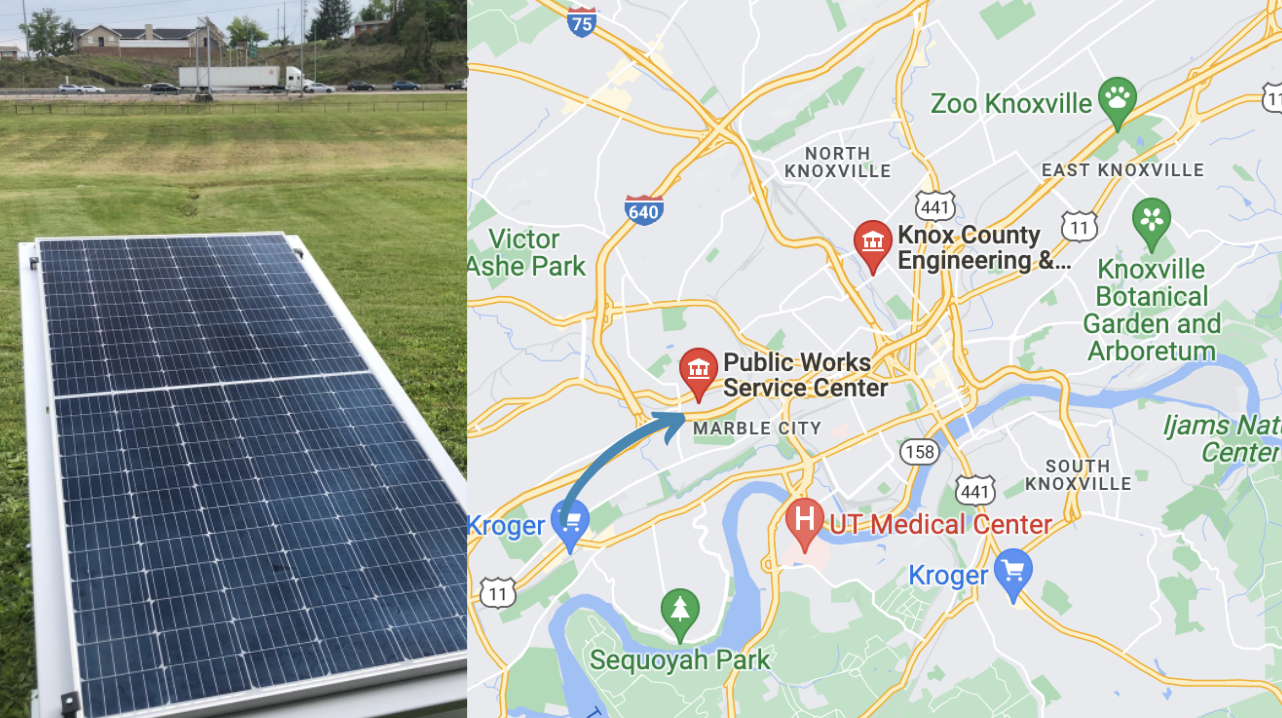This blog post was written by Brady Watson, former Civic Engagement Coordinator for the Southern Alliance for Clean Energy.
On Friday, April 29th, the Knoxville Utilities Board (KUB) broke ground on a new 1 megawatt (MW) community solar project located in front of the city’s Public Works Building on a brownfield site formerly home to an industrial plant that polluted the ground with chemicals and heavy metals. Several officials from various agencies attended including from the City of Knoxville, KUB, which supplies power to Knoxville, and the Tennessee Valley Authority (TVA), who KUB purchases most of its power from.

Knoxville community will see solar in action
At the ground breaking, City Mayor, Indya Kincannon, cited the city’s climate goals of reducing greenhouse gas emissions community-wide 80% by 2050 as one reason she was excited about the new project that will supply renewable energy to Knoxville. She also noted the solar farm’s prominent location off of Interstate 40 as a way to showcase what solar energy looks like in practice. Her hope is that the project will demonstrate the feasibility of solar energy to the broader community.

Details of KUB’s solar program remain unclear
Also at the event, KUB’s CEO, Gabe Bolas, explained the project will cost around $1.4 million dollars and the plan details are still being worked out. We, the public, know individuals will be able to subscribe to the program and purchase “shares” of the energy generated. What we don’t know is how the program will allocate the shares, who can sign up, and who actually gets the electrons from the solar field. Both the City of Knoxville and the University of Tennessee plan to purchase shares, and it’s unclear how many will be leftover for the community.
KUB’s long-term contract with TVA allows for solar, but with unambitious limits
The 1 MW project will be executed using part of KUB’s 5% self-generation provision in their long-term contract signed with TVA. The contract locks KUB into buying power from TVA for the next 20 years and is self-renewing, which means the 20-year timeframe resets each day and would require KUB to give 20 years’ notice to TVA if they ever decide to pursue alternative power suppliers – even if 19 years had gone by since the original contract was signed.
KUB can self-generate up to 5% of its own power, and the other 95% must come from TVA. While we at SACE were not supportive of KUB signing the contract, we applaud their efforts to add an additional 502 MW of solar by 2024 through TVA’s Green Invest program, which will generate roughly 20% of the energy KUB customers consume.
The community solar project is expected to be completed this fall, and program details will be announced closer to that time. As always, the devil will be in the details and determine if this community solar project will actually be accessible to the community of Knoxville. Stay tuned for future updates and how this will affect KUB and TVA’s standing in our forthcoming annual “Solar in the Southeast” report – last year’s report highlighted KUB as a SunRiser.